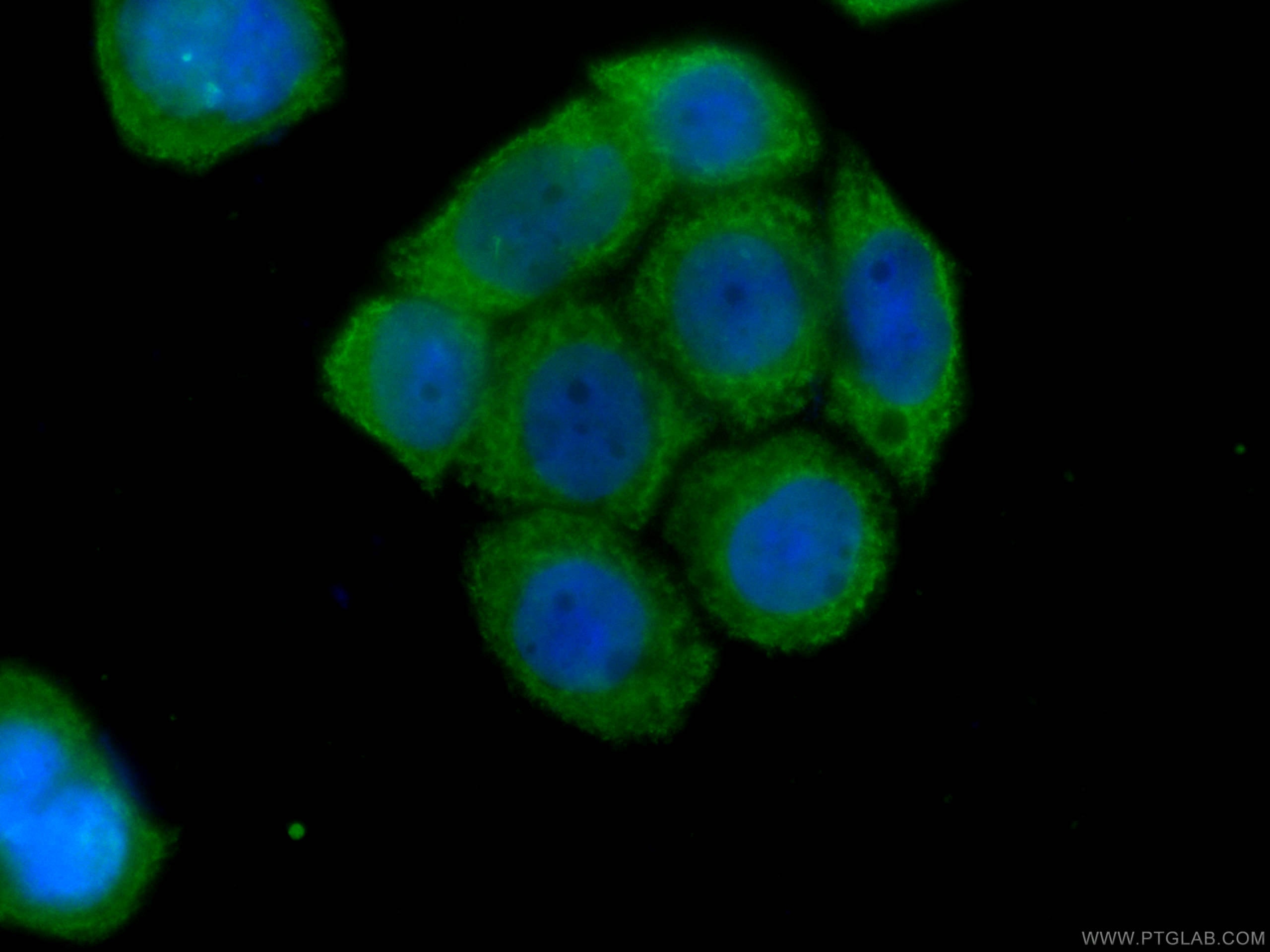- Featured Product
- KD/KO Validated
EPLIN Monoklonaler Antikörper
EPLIN Monoklonal Antikörper für IF
Wirt / Isotyp
Maus / IgG1
Getestete Reaktivität
human, Ratte
Anwendung
IF
Konjugation
CoraLite® Plus 488 Fluorescent Dye
CloneNo.
6E6E6
Kat-Nr. : CL488-66071
Synonyme
Galerie der Validierungsdaten
Geprüfte Anwendungen
| Erfolgreiche Detektion in IF | HeLa-Zellen |
Empfohlene Verdünnung
| Anwendung | Verdünnung |
|---|---|
| Immunfluoreszenz (IF) | IF : 1:50-1:500 |
| It is recommended that this reagent should be titrated in each testing system to obtain optimal results. | |
| Sample-dependent, check data in validation data gallery | |
Produktinformation
CL488-66071 bindet in IF EPLIN und zeigt Reaktivität mit human, Ratten
| Getestete Reaktivität | human, Ratte |
| Wirt / Isotyp | Maus / IgG1 |
| Klonalität | Monoklonal |
| Typ | Antikörper |
| Immunogen | EPLIN fusion protein Ag13288 |
| Vollständiger Name | LIM domain and actin binding 1 |
| Berechnetes Molekulargewicht | 85 kDa |
| Beobachtetes Molekulargewicht | 90 kDa, 110 kDa |
| GenBank-Zugangsnummer | BC001247 |
| Gene symbol | LIMA1 |
| Gene ID (NCBI) | 51474 |
| Konjugation | CoraLite® Plus 488 Fluorescent Dye |
| Excitation/Emission maxima wavelengths | 493 nm / 522 nm |
| Form | Liquid |
| Reinigungsmethode | Protein-G-Reinigung |
| Lagerungspuffer | BS mit 50% Glyzerin, 0,05% Proclin300, 0,5% BSA, pH 7,3. |
| Lagerungsbedingungen | Bei -20°C lagern. Vor Licht schützen. Nach dem Versand ein Jahr stabil. Aliquotieren ist bei -20oC Lagerung nicht notwendig. 20ul Größen enthalten 0,1% BSA. |
Hintergrundinformationen
EPLIN is a cytoskeletal protein that is preferentially expressed in epithelial cells and is implicated in regulation of cytoskeletal dynamics and cytokinesis. In human, there are two known isoforms, EPLIN-a and -b, generated by alternative promoter usage from a single gene. EPLIN-a expression is often down-regulated in cancerous cells and tissues. This antibody recognizes both of isoforms of EPLN.
Protokolle
| Produktspezifische Protokolle | |
|---|---|
| IF protocol for CL Plus 488 EPLIN antibody CL488-66071 | Protokoll herunterladen |
| Standard-Protokolle | |
|---|---|
| Klicken Sie hier, um unsere Standardprotokolle anzuzeigen |


